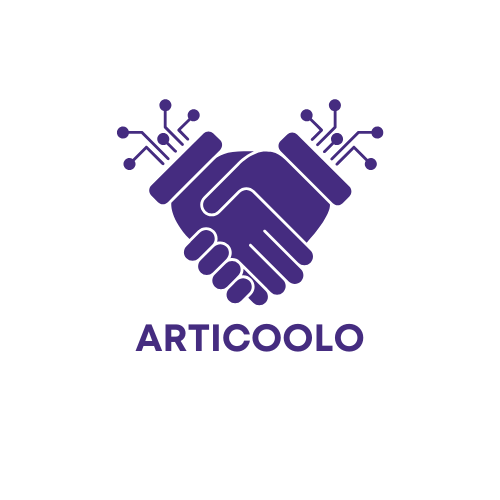In a world where AI can whip up content faster than a caffeinated squirrel on a sugar rush, the challenge isn’t just about keeping up—it’s about staying human. Sure, algorithms can churn out words, but can they capture the essence of a heartfelt story or the quirky nuances of humor? Balancing AI and creativity is like trying to walk a tightrope while juggling flaming torches; it requires finesse and a dash of bravery.
Balancing AI and Creativity: Keeping Your Content Human
Maintaining human creativity alongside AI’s capabilities presents challenges yet offers opportunities. Writers can leverage AI for data analysis and trend identification, enhancing their creative process. Crafting narratives infused with personal experiences and emotions ensures authenticity.
Using AI’s speed and efficiency allows for rapid content generation while still prioritizing human touch. Engaging storytelling requires nuance, which AI algorithms often miss. Personal insights and cultural references resonate deeply with audiences, fostering connection.
Balancing technical precision with creative flair involves deliberate choices. Writers must decide when to rely on AI and when to infuse human creativity. Striking this balance enhances engagement while ensuring originality.
Human oversight remains critical in the editorial process. Utilizing AI tools for grammar checks or headline generation saves time but doesn’t replace the creativity inherent in writing. Decisions about tone and style require human intuition.
Recognizing when AI can assist rather than dominate is vital. Emphasizing creativity enables deeper engagement and retains the audience’s interest. Balancing AI and creativity leads to content that informs while captivating readers.
Ultimately, the fusion of technological assistance and personal expression leads to compelling content. Emphasizing authenticity in a digital landscape positions creators to resonate with their audience effectively. This balance encourages innovation while celebrating the uniquely human aspects of storytelling.
The Role of AI in Content Creation
AI plays a significant role in shaping modern content creation. It offers tools that enhance efficiency while allowing writers to focus on creativity.
Benefits of AI in Content Development
AI provides valuable insights through data analysis, enabling writers to identify trends and audience preferences. By processing large data sets, it uncovers patterns that inform content strategy. Automation tools streamline mundane tasks like grammar checks and formatting. This allows writers to save time, which they can then invest in brainstorming and innovative thinking. Enhanced productivity emerges from integrating AI tools, offering writers a chance to elevate their craft. Additionally, AI-driven tools can generate SEO-optimized headlines and suggestions that lead to increased visibility in search results.
Limitations of AI Technology
Despite its advantages, AI technology has notable limitations. It struggles to capture nuanced emotions and voice unique to human storytelling. Understanding cultural contexts often eludes AI algorithms, resulting in potential miscommunication. While efficient in generating data-driven content, it lacks the creativity and spontaneity inherent in human writing. Writers may find themselves needing to edit AI-generated drafts extensively. A balance remains crucial; dependence on AI can stifle authenticity in content. Ultimately, eclectic storytelling, rich in personal experience, demands a human touch that AI cannot replicate.
Emphasizing Human Touch in Creative Content
Creative content thrives on authenticity and emotional connection. Engaging audiences requires the infusion of personal experiences, which resonates more deeply than data alone.
Importance of Authenticity
Authenticity builds trust between creators and their audience. Genuine storytelling reflects shared experiences and emotions, fostering a sense of belonging. Audiences connect with real stories, sparking relationships and loyalty. Examples of authenticity include anecdotal evidence and personal reflections woven into narratives. These elements provide context and familiarity, creating an impactful connection. Writers who prioritize authenticity enhance their storytelling by making it relatable and engaging. As a result, content becomes more compelling, encouraging readers to engage and share.
Techniques for Infusing Creativity
Various techniques exist for enhancing creativity in writing. Incorporating vivid imagery breathes life into descriptions, painting mental pictures for the reader. Using humor adds a layer of relatability, making content enjoyable and memorable. Experimenting with different narrative styles encourages innovation, allowing writers to explore various perspectives. Engaging in collaborative brainstorming sessions sparks new ideas, enriching the creative process. Writing prompts can also inspire fresh concepts, pushing writers beyond their comfort zones. Altogether, these methods ensure that human creativity remains at the forefront, distinguishing content in a landscape populated by AI-generated text.
Strategies for Balancing AI and Human Input
Technology and creativity can coexist, offering unique opportunities for content creation. Effective strategies enable writers to maintain a balance between AI assistance and human insight.
Collaborating with AI Tools
Writers can enhance productivity by using AI tools for research and data insights. These tools provide valuable information on trending topics and audience behavior. Time spent on mundane tasks decreases, allowing more focus on creative aspects. Integrating AI into the writing process opens new avenues for brainstorming and idea generation. Writers should experiment with different AI applications to find what best complements their workflow.
Maintaining a Personal Voice
An authentic narrative engages the audience and fosters emotional connections. Writers should prioritize their unique style by weaving personal experiences into their content. Using anecdotes adds depth and resonance. It’s essential to edit AI-generated text thoroughly to ensure it reflects individual voice and tone. Balancing AI-generated insights with personal storytelling enhances originality and keeps the narrative relatable.
Conclusion
Balancing AI and human creativity is essential for effective content creation. Writers have the opportunity to harness AI’s capabilities while ensuring their unique voice shines through. By integrating personal experiences and emotions into their work, they can create narratives that resonate with audiences on a deeper level.
AI can streamline the writing process and provide valuable insights but it should never overshadow the human touch that makes storytelling compelling. As writers navigate this landscape, embracing both technology and creativity will lead to innovative content that captivates and engages. Ultimately, the synergy between AI and human creativity is where the magic happens, fostering authentic connections in a digital world.














Discussion about this post